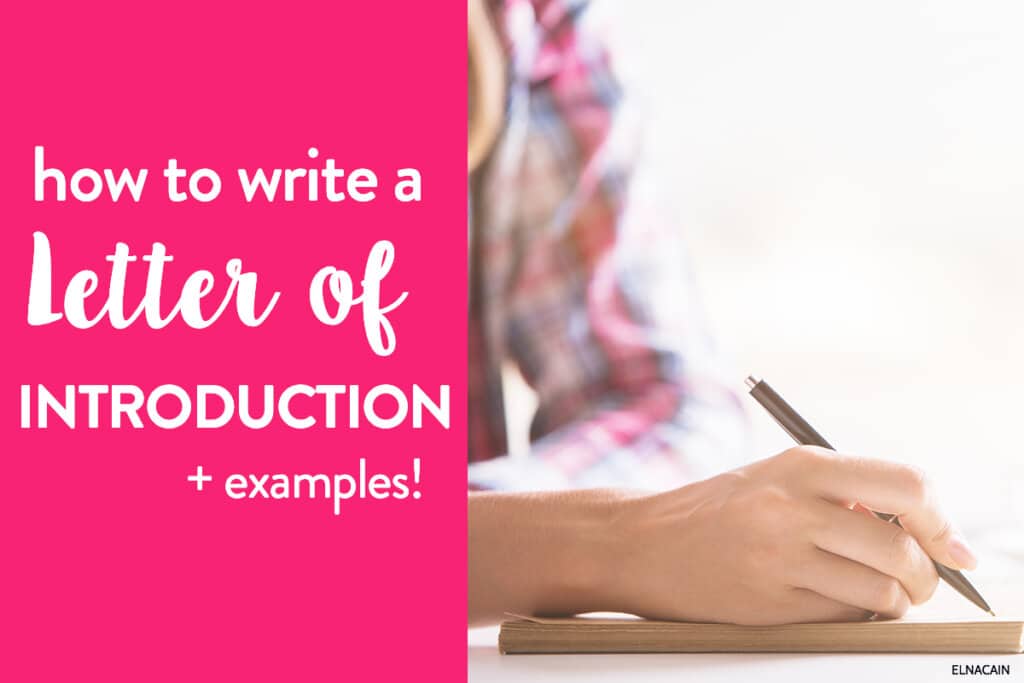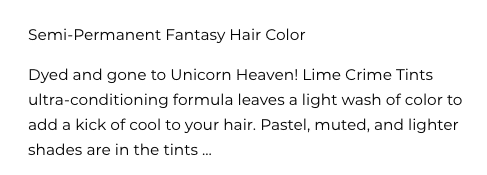If you know anything about freelance writing, then you know that cold pitching is one of the most effective ways to gain clients and writing jobs.
Yet many freelance writers are hesitant to reach out to clients out of nowhere and offer their freelance writing services.
This make sense, since cold pitching is almost guaranteed to result in rejection from time to time, as clients decline your writing services or don’t respond to you at all.

However, every cold pitch has the potential to get you a writing job – one that is higher-paying than a typical job board ad (although I job boards are still a great way to find writing jobs if you’re new).
If you’re just getting your feet wet when it comes to cold pitching, or you want to switch up your pitching tactic, I have a solution that may work better for you.
Sending out letters of introductions, or LOIs for short, may be a better approach to cold emailing for you.
It’s a more subtle way of finding freelance writing jobs but still makes a good impression on the potential client.
It may just be the pitching tactic that works best for you – or perhaps it will help you build the confidence to start sending out cold pitches.
Either way, a letter of introduction is a great method of reaching out to potential clients in order to create a line of communication and showcase your skills as a freelance writer.
Ready to get started? In this guide you’ll learn what is a letter of introduction, why you need one, who to write a letter of introduction for a job application and a letter of introduction example and templates to use.
What is a Letter of Introduction?
A letter of introduction is a quick note or email that introduces yourself, gives an overview of your freelance writing skills and hints at how you can benefit the potential client.
Sounds like a cold pitch, right?
What makes a letter of introduction different from a cold pitch is that you are not asking for a job or assignment.
For example, you would send a writing pitch if you are interested in writing a specific article for a specific site.
Letters of introduction, alternatively, are simply a way to make yourself known to the person you are emailing. This includes potential clients, agencies and editors.
So while a cold pitch email may say something like, “Hey, I’m a freelance writer and I want to write this article for your site,” a letter of introduction sounds more like, “Hey, I’m a freelance writer and here are my skills and the ways I can benefit your agency/company/site.”
Well, is a letter of introduction the same as a cover letter? Try not to think of this as a letter of introduction vs. cover letter type of thing. They work together.
Overall, a letter of introduction is a cross between a resume and a cover letter – with the end-goal of not getting hired, but simply having the potential client respond and create a connection.
It’s a great way to start networking since the point of these letters is to start a conversation.
And personally, I’ve found the best success as a long-term freelance writer with creating those close relationships with brands and businesses in my writing niche. I could not be a freelance writer without these connections and neither can you!
Why You Need a Letter of Introduction as a Freelance Writer
I’m sure your vision as a freelance writer is not to constantly send out one-off pitches and earn money one article at a time, right?
That is not the life of a freelance writer!
I mean, that one article could lead to consistent content writing – or, at the very least, a few more paid freelance writing jobs.
In a letter of introduction, you pitch yourself instead of an idea and focus more on selling yourself as a writer than selling a solitary article idea.
This increases your chance of building good relationships with long-term clients.
You do this by communicating to them that you understand their audience’s problems, as well as theirs, and you are capable of creating content that offers solutions.
How to Write a Letter of Introduction
Just like a pitch or a cover letter, the key to writing a good letter of introduction is to keep it short and concise.
You can probably imagine how many emails clients receive on a daily basis – you want to be able to capture their attention and get your point across quickly before your letter of introduction is sent to the trash bin.
You also want to be aware of who it is you are writing to. Is this a business professional? Someone with a more laid-back attitude?
Although you want your letter of introduction to sound professional, you’ll connect more easily with the client if you match their tone.
You’ll also subtly indicate to the potential client that you can match the tone of their site as well.
To determine what their tone is, visit their site and peek around. Read their about page, mission statement and any blog articles.
This is also key to matching your skills and experience to their brand.
You wouldn’t walk into a job interview without knowing anything about the company you applied for – same goes for the potential clients you are reaching out to.
For example, Lime Crime is a vegan and cruelty-free makeup line and from visiting their site you can tell they are a vibrant and colourful brand.

And by reading their product descriptions for their products –and their About page/brand message – you can see they are marketing to millennials and a younger crowd.

Again, the whole point of your letter of introduction is to stand out and make the client pay attention.
So, to summarize, here are some key points to remember about your letter of introduction:
- Keep it short and sweet
- Align your tone with the tone of the client’s website (but stay professional)
- Research the company and pay attention to their about page and mission statement
- Highlight how your skills and experience can be of benefit to them by mentioning aspects of their company/site.
Remember that you are, effectively, selling yourself – but you don’t want to make that painfully obvious to the client.
You’ll see in the letter of introduction templates later in the post how you can point out to the freelance writing client how you can benefit them without saying, “Here is how I can benefit you…”
Letter of Introduction Outline
So now you know what should be included in your letter of introduction – but how do you put it all together?
Below is a breakdown of the LOI format to help you understand how to organize what you need to say to a potential client.
I’ll also provide you with a template you can personalize to create an attention grabbing letter of introduction – so keep reading!
The Subject Line
You can write the most amazing LOI the world has ever seen but a potential client may not even open it if the subject line doesn’t grab their attention.
Make sure your subject line is clickable by including the following:
- The client’s industry/niche.
- Your strengths and personality
- How you can help the client
For example, “Experienced B2B Content Writer Eager to Provide Engaging Content for Your Site” is far more interesting and informative than, “Freelance Writer for Hire.”
Your subject line should give the prospective client a brief snapshot of what you do and how you can benefit their brand/company.
Test out different subject lines to see which ones are effective in getting a response.
Addressing the Client
You can immediately establish a warm connection with a potential client by addressing them by name.
By finding out who to address your LOI to, you’ve established that you are looking to build a connection as well as the fact that you’ve looked into their company.
Sometimes it can be easy to figure out who to address your LOI to. For example, on my Twins Mommy blog, I introduce myself immediately on the about page.
Other times, you may have to do some digging around. Search through the site to see if you can find a contact or person responsible for the site’s content – this could be the site owner or even an editor or marketing and sales coordinator.
For example, with Lime Crime, they don’t share who is behind this makeup line, but if you look on LinkedIN you can get some names.

Ultimately, if you can’t find a name, avoid using the overused phrase, “To Whom it May Concern.”
Instead, open with something a bit more casual such as, “Hey there,” or even use the company’s name: “Hi, Lime Crime.”
Asking a Question
When you want to write a compelling article that immediately grabs the reader’s attention, what do you do?
That’s right: You ask a question!
Questions are used to create intrigue for readers and invite them to participate in a conversation.
Since we want to create a conversation and connection with the potential client, using a question is a great way to involve them more actively in your LOI.
Otherwise, they are only passively reading what you have to say.
Introducing Yourself
After you have peaked the client’s interest with a question, it’s time to let them know who you are.
Your introduction should include your name, your position/title and connection to their brand.
For example:
“My name is Elna Cain and I am a freelance writer. I recently came across your site and couldn’t help but notice your passion for helping stay-at-home mothers create profitable businesses while balancing work and mom life.”
You can see how I pointed out the client’s audience as well as the problem they wish to solve. This establishes that you understand the client.
Next, you want to highlight very briefly what it is you do. Stick to skills that will directly benefit the client:
“As a freelance writer, I have experience writing content that helps moms create and grow businesses from home. My work has been published on sites such as Today, Mother Hustle and The Pennyhoarder.”
This is where you tie in your experience with their site/brand. You can also include publications or sites that you have been featured on to add some credibility to your skills.
What if you don’t have noteworthy publications? You can highlight other things like managing a blog or your influence on social media or connect with them my mentioned you are a customer of theirs!
Adding Some Personality
You want to make sure that the potential client understands you are not a robot or simply sending out a cookie-cutter LOI template.
While templates can help you cut the time it takes to prospect, you do have to make each letter of introduction unique and personal, but professional.
Remember how I said to keep your letter of introduction professional?
Well, that doesn’t mean formal, so here is a chance to relax your language and be yourself (while keeping with the client’s tone).
You’re going to let your personality shine while directly offering your services to the client as well as examples of your work:
“Wouldn’t it be great to have someone write your content for you? I’d like to know if you need a freelance writer who can help with your content needs. If you’re interested, you can check out samples of my writing here as well as my LinkedIn profile here.”
Adding another question here further encourages engagement from the client while also giving them something to ponder.
Closing
You’ve asked the questions, you’ve introduced yourself – now it’s time to close the letter with a call-to-action.
Unlike a blog post or article where you directly ask readers to comment, you want to be a bit more subtle when it comes to your LOI.
It can be something as simple as, “I’d be more than happy to discuss my experiences and how I can be of help to your brand. I look forward to hearing from you.”
This implies that you are expecting a response without asking for one while at the same time giving the client a reason to contact you – to get more information about what you can do for their company.
Letter of Introduction Template
Now that you understand what goes into an LOI, and how to organize that information, here is a simple template you can customize for each client you send it to:
Subject: Experienced [Niche/Industry] Content Writer eager to provide engaging content for (Site Name)
Hi [Person’s Name],
Have you ever thought about hiring a freelance writer?
My name is [name] and I am a beauty and makeup freelance writer. I recently came across your site and couldn’t help but notice your passion for helping [audience] [audience goal] while [audience’s problem].”
As a freelance writer and vegan lover, I have experience writing content that helps [audience] [reword audience goal]. My work has been published on sites such as [site 1], [site 2] and [site 3].
Wouldn’t it be great to have someone write your content for you? I’d like to know if you need a freelance writer who can help with your content needs.
If you’re interested, you can check out samples of my writing here as well as my LinkedIn profile here.
I’d be more than happy to discuss my experiences and how I can be of help to your brand.
I look forward to hearing from you!
All the best,
[Your name]
Short, sweet, simple and to the point!
Just be sure to change it up a little bit for every client that you send it to – you want to make it personable to that individual in order to build a genuine connection.
Ready to Get Started?
With your LOI template in hand, it’s time to start sending it out into the world!
Remember that every potential client you send it to is just that – a potential client.
You may feel like sending out LOIs is like running on a huge hamster wheel where you keep doing the leg work but get nowhere.
Let me tell you that the more LOIs you send out, the more success you will have!
This post is part of my how to write series. If you need help learning how to write certain types of content, make sure to look at these guides:
- How to Write a Resume as a Freelance Writer
- How to Write a Cover Letter
- How to Write a White Paper
- How to Write a Case Study
- How to Write a Writing Sample
- How to Write an About Me Page
You can do this alongside your cold pitching strategy and see which ones yield better results!
And success is like a snowball – once you get started on picking up clients, you’ll find that the work will start rolling in.
Now I want to hear from you: Tell me about the success you’ve had sending out letters of introduction and cold pitches!




10 Comments